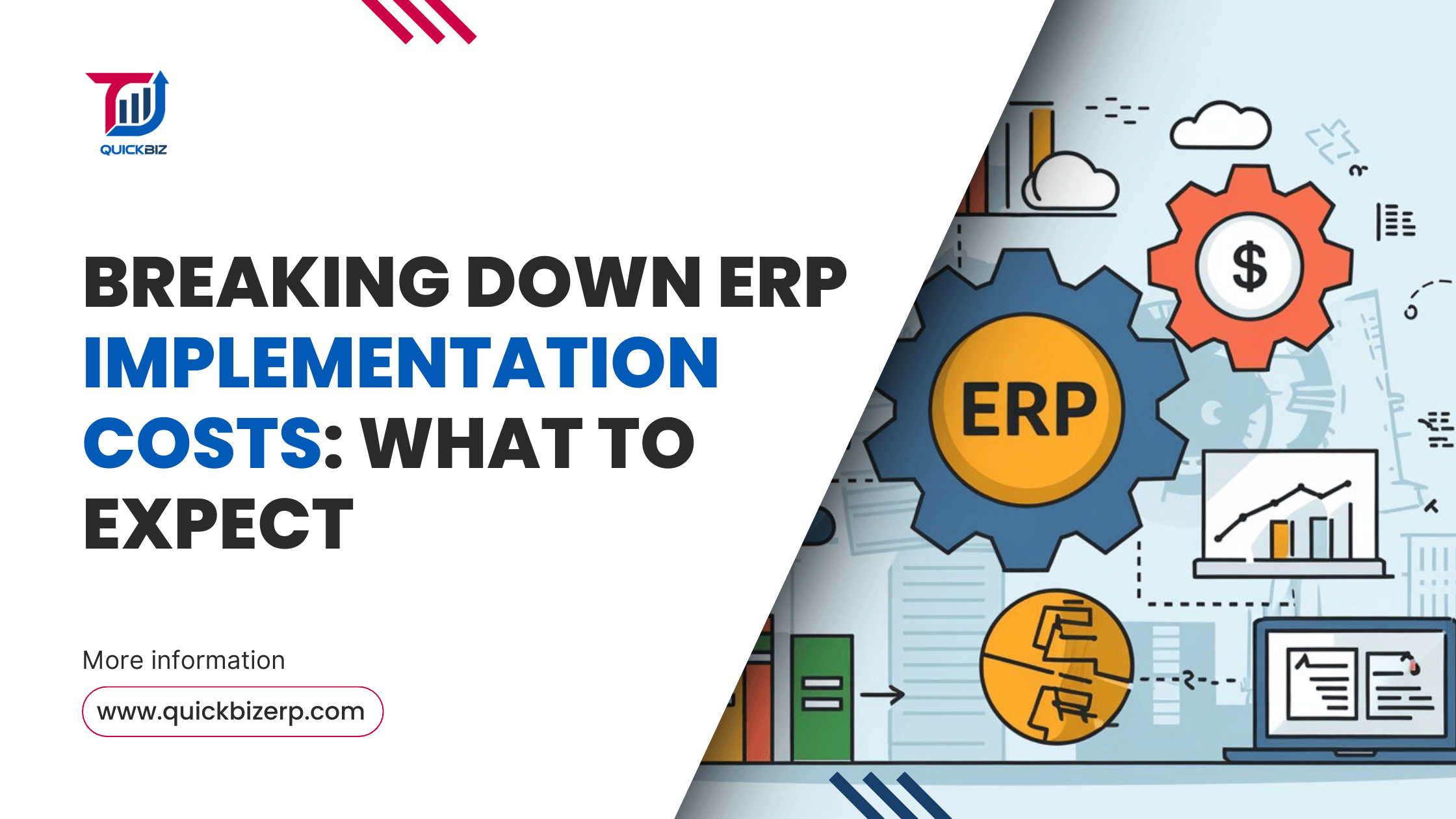Breaking Down ERP Implementation Costs: What to Expect

Introduction
In today’s fast-paced business environment, Enterprise Resource Planning (ERP) systems have become a cornerstone for companies striving to streamline operations, enhance productivity, and stay competitive. However, despite their immense benefits, many businesses hesitate to adopt ERP systems due to the perception of high costs.
This blog aims to demystify ERP implementation expenses by providing a detailed breakdown of the key cost components, practical budgeting strategies, and cost-saving tips to help you make an informed decision.
The Key Components of ERP Implementation Costs
1. Licensing Fees
Licensing is one of the most significant costs associated with ERP implementation. Businesses can choose between two primary models:
- Perpetual Licensing: A one-time fee that grants lifetime access to the software.
- Subscription Licensing: Recurring payments, often monthly or annually, for cloud-based ERP systems.
Factors influencing licensing fees include the number of users, selected modules, and deployment type (on-premise or cloud). For SMEs, opting for subscription-based models may offer flexibility and reduce upfront costs.
2. Customization and Integration Costs
Every business has unique workflows, and ERP systems often require customization to align with specific needs. Examples include:
- Tailoring workflows to fit operational processes.
- Designing custom reports and dashboards.
- Integrating third-party tools or existing software.
While customization adds value, it’s essential to define priorities to avoid overextending budgets.
3. Training and Onboarding
An ERP system is only as effective as the people using it. Training employees and onboarding teams are critical for successful implementation. Costs may include:
- Workshops or training sessions.
- Developing user manuals and guides.
- Onboarding support from vendors or consultants.
Investing in training ensures smoother adoption and maximizes the systems potential.
4. Maintenance and Support
ERP systems require ongoing support to remain effective. Maintenance costs typically cover:
- Software updates and new features.
- Bug fixes and issue resolution.
- Vendor support for troubleshooting and queries.
These expenses are recurring but essential for long-term efficiency and system reliability.
5. Hidden Costs to Watch For
Beyond the obvious expenses, some hidden costs may arise:
- Data Migration: Transferring existing data into the new system can be complex and time-consuming.
- Downtime: Operational interruptions during implementation may temporarily impact productivity.
- Consulting Fees: Engaging external experts for guidance can add to the overall cost. Proper planning and vendor transparency can help mitigate these surprises.
How to Budget Effectively for ERP Implementation
To ensure a successful ERP implementation without financial strain, follow these budgeting tips:
- Define Clear Goals: Outline the specific objectives you want to achieve with the ERP system.
- Prioritize Essential Features: Focus on the must-have modules and functionalities.
- Allocate Resources for Training: Ensure adequate funding for employee training and change management.
- Choose the Right Vendor: Select a vendor that offers transparent pricing and aligns with your business needs.
Cost-Saving Tips for ERP Implementation
For SMEs looking to maximize value while minimizing costs, here are proven strategies:
- Leverage Scalable ERP Solutions: Start with a modular ERP system that allows you to add features as needed.
- Opt for Cloud-Based ERP: Reduce infrastructure and maintenance costs by choosing a cloud deployment.
- Partner with Experienced Vendors: Work with vendors who have a proven track record to avoid costly errors.
- Take Advantage of Promotions: Look for bundle offers or seasonal discounts from vendors.
The ROI of ERP: Why It’s Worth the Investment
Although ERP implementation involves significant upfront costs, the long-term benefits far outweigh the expenses:
- Tangible Gains: Increased efficiency, reduced operational errors, and streamlined processes.
- Long-Term Savings: Automation and integration reduce manual tasks, cutting operational costs over time.
- Proven ROI Statistics: tudies show that businesses implementing ERP systems see an average ROI of 7:1 within the first three years.
Investing in an ERP system is an investment in growth, enabling SMEs to compete effectively in a dynamic market. Learn more about how to maximize your ERP ROI in How to Maximize Your ERP ROI.
Conclusion
ERP implementation is not just a cost—it’s a strategic investment in your business’s future. By understanding the key cost components, budgeting effectively, and leveraging cost-saving tips, SMEs can unlock the full potential of ERP systems without breaking the bank.

